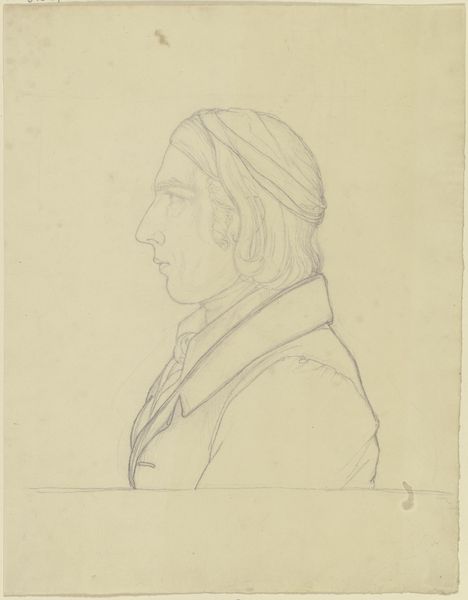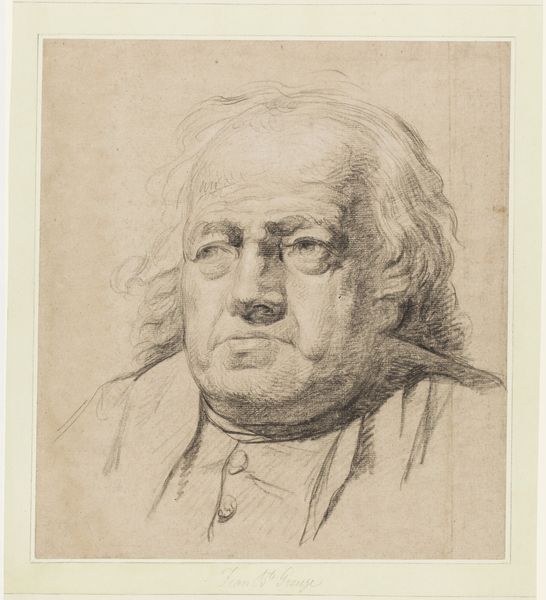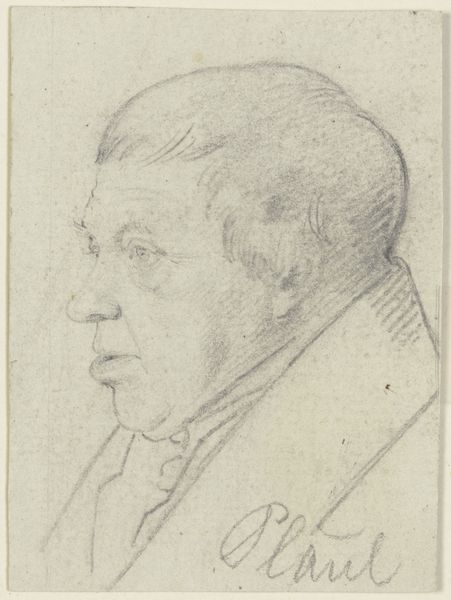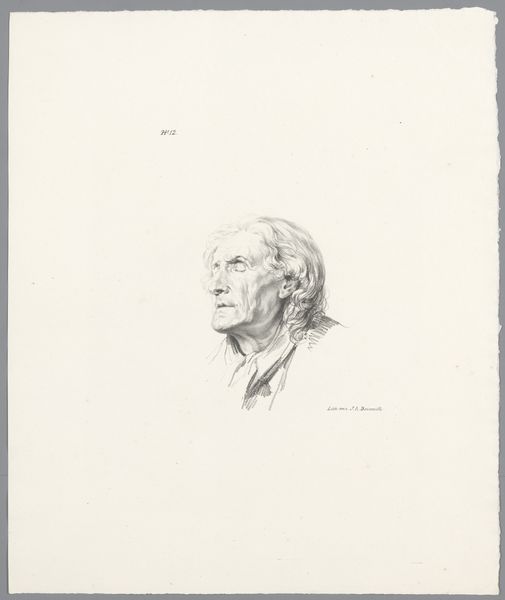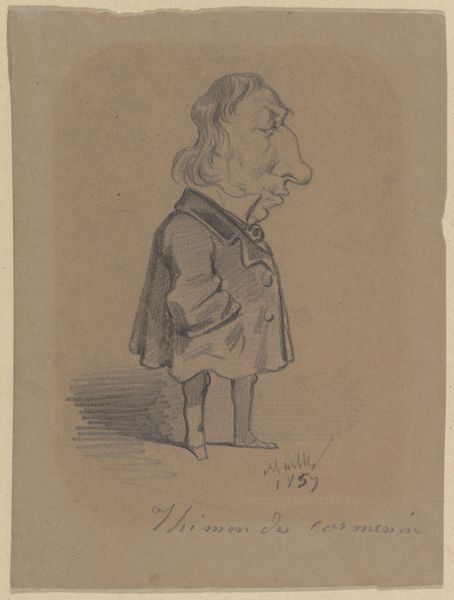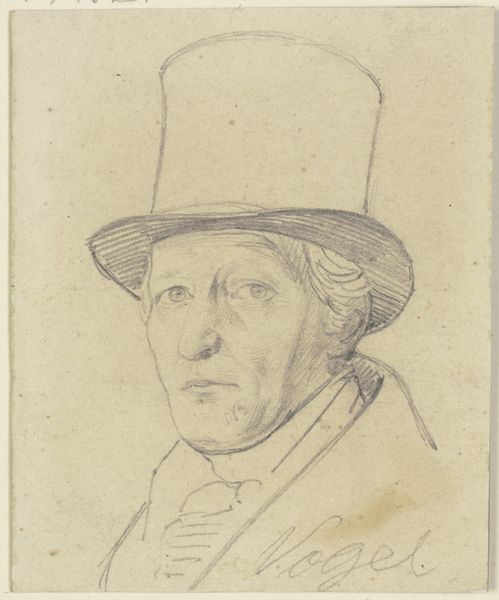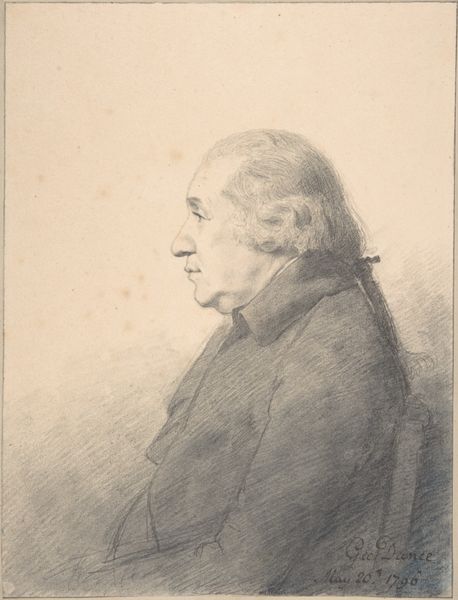
drawing, print, pencil
#
portrait
#
drawing
#
16_19th-century
#
self-portrait
# print
#
impressionism
#
pencil
#
men
#
sketchbook drawing
#
portrait drawing
#
profile
#
realism
Dimensions: 12 1/8 x 7 5/8 in. (30.8 x 19.4 cm)
Copyright: Public Domain
Curator: Immediately striking. The energy of the lines conveys a sense of immediacy, doesn't it? It feels as though the artist quickly captured a fleeting moment. Editor: Indeed. This drawing is titled "Portrait of Honoré Daumier" by Etienne Carjat, created in 1861. It's a pencil drawing, a profile sketch now held at the Metropolitan Museum of Art. Daumier, as in, the famed printmaker, painter and sculptor who chronicled the bourgeois and made political caricatures. This is someone’s rendering of him! Curator: You’re absolutely right about the artist and sitter’s legacies. But returning to the sketch, the cross-hatching to suggest depth and form… it's more than a mere portrait; it is almost a character study, one made sympathetic through its visible construction. See how some lines are firmer, darker, than others, especially defining the shape of the nose, which seems so expressive. It's like the artist is searching for Daumier’s essence. Editor: I see that, but what does it tell us about Carjat? Remember, this piece originated as a photograph taken by Carjat in his Paris studio; it was then rendered into lithographic portraits for "Le Boulevard" - a publication where Carjat featured other artists of his time. So the drawing carries that performative function—a portrait made for the popular press. In his effort to portray his artist peer, he perhaps was making social inroads in his own circles. The gaze, or lack of, given its in profile, avoids direct interaction, so the power dynamic of artist/sitter relationship plays out intriguingly. Curator: An insightful point about its original role in "Le Boulevard," reframing our reading. And I must concede, looking at the work again, there's an economy in the drawing that hints at efficiency necessary for mass distribution. Yet that's also, perhaps, its strength. There's such openness about the composition with generous bare areas of the sheet. Editor: Ultimately, the print made after this pencil sketch served a dual purpose: to honor a fellow artist and to promote the artist's own status. That push and pull of intentions shapes its reception for audiences of the time and of ours. Curator: Indeed, it becomes a document reflecting its cultural environment while maintaining aesthetic grace through skillful artistry. It’s like, regardless of subject or intent, aesthetic achievements stand alone as treasures in a space like The Met, aren’t they? Editor: Yes. By focusing closely on formal decisions and contextual evidence, we start seeing even more nuances within those seemingly simple lines.
Comments
No comments
Be the first to comment and join the conversation on the ultimate creative platform.
